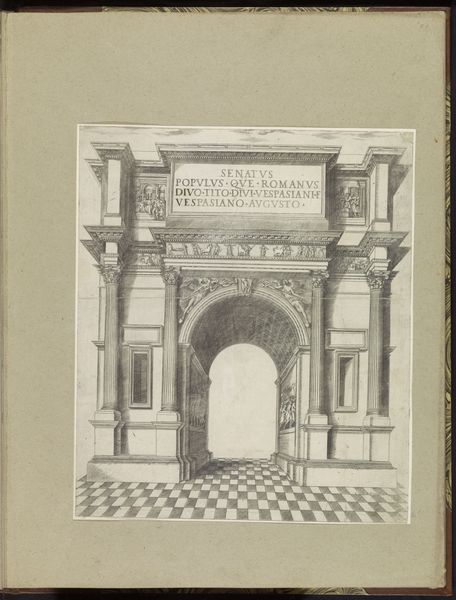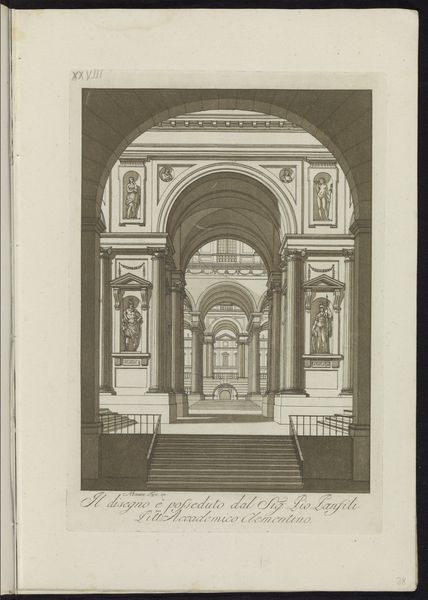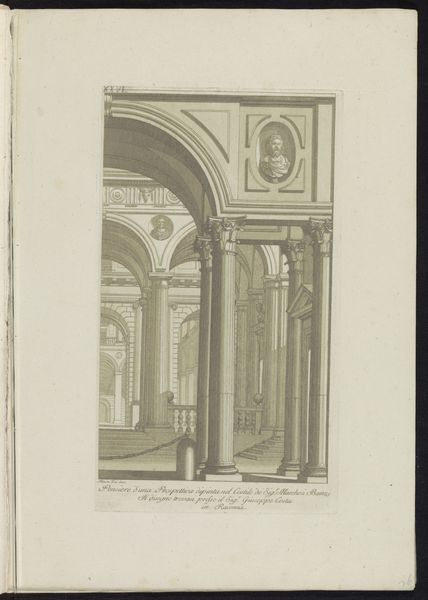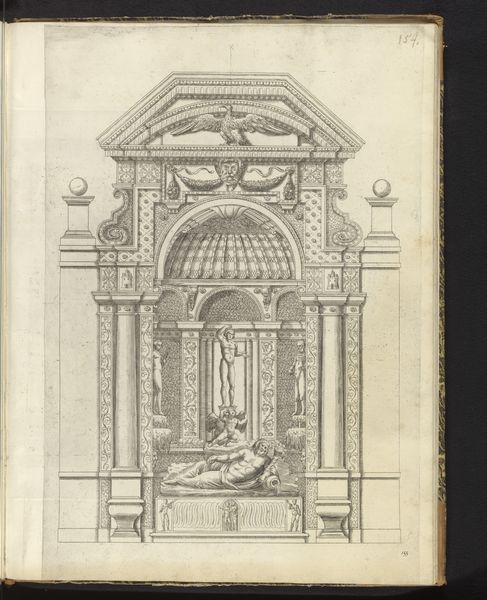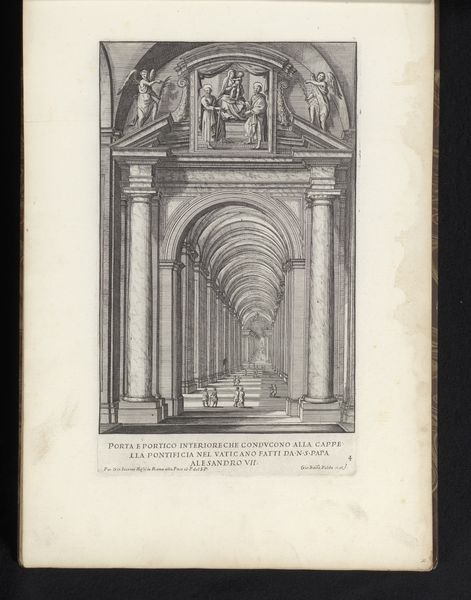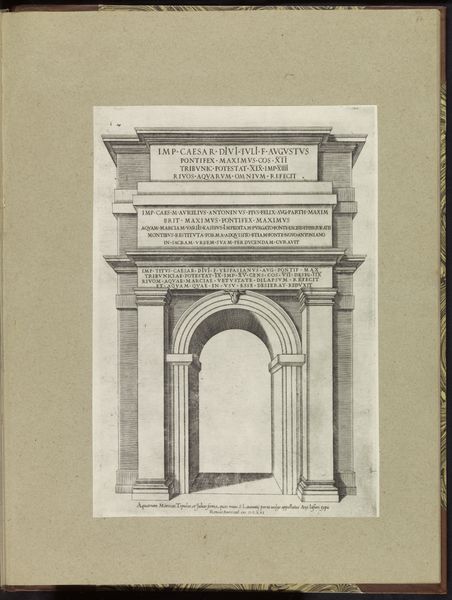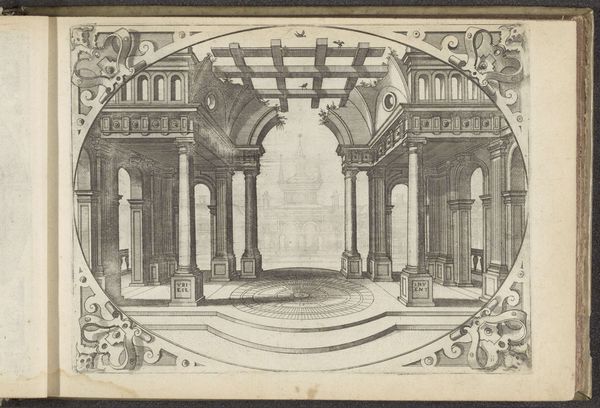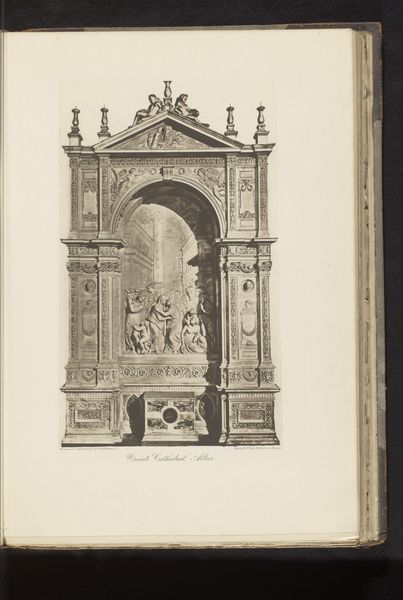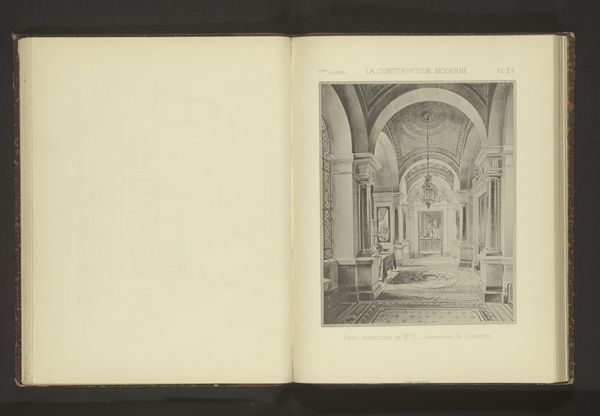
drawing, paper, pencil, architecture
#
drawing
#
pencil sketch
#
sketch book
#
paper
#
11_renaissance
#
geometric
#
pen-ink sketch
#
pencil
#
cityscape
#
watercolour illustration
#
italian-renaissance
#
pencil art
#
watercolor
#
architecture
Dimensions: height 435 mm, width 371 mm
Copyright: Rijks Museum: Open Domain
This drawing depicts the Arch of Septimius Severus in Rome. Its visual language speaks of power and triumph. Erected in 203 AD, the arch commemorates the Roman victories over the Parthians, but also the imperial strength and dominance in Rome. Let’s consider the arch as a symbolic structure, like a gate to power itself. The triumphal arch finds echoes in other artworks throughout time. We see it in Renaissance paintings and in Neoclassical monuments, each time serving as a declaration of victory or authority. Yet, in each iteration, the arch is reshaped by the cultural and historical milieu it inhabits. The careful arrangement of inscriptions, the carvings, and the very structure of the arch are designed to provoke a psychological response: awe, respect, and a sense of permanence. Like the ouroboros, the arch embodies a cyclical journey, reminding us that history, like memory, is not a linear path, but a continuous return.
Comments
No comments
Be the first to comment and join the conversation on the ultimate creative platform.
